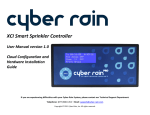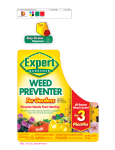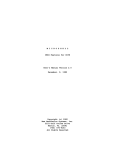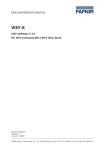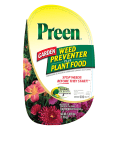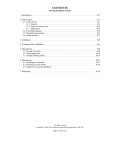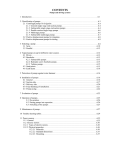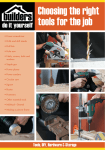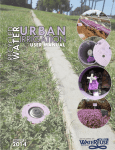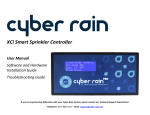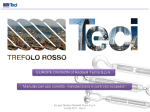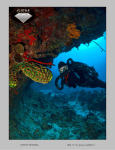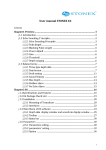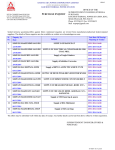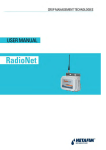Download Constant inside diameter (CID) AC pipes
Transcript
CONTENTS Irrigation accessories 1 Introduction ........................................................................................................................................................................................................................................... 7.1 2 Pipe types available ...................................................................................................................................................................................................................... 7.1 2.1 Asbestos cement pipes .............................................................................................................................................................................................. 7.1 2.1.1 Constant outside diameter (COD) AC pipes ................................................................................................................... 7.1 2.1.2 Constant inside diameter (CID) AC pipes ......................................................................................................................... 7.2 2.1.3 Fittings for AC pipes .................................................................................................................................................................................. 7.2 2.1.4 Transport ...................................................................................................................................................................................................................... 7.3 2.1.5 Handling ....................................................................................................................................................................................................................... 7.3 2.1.6 Storage ............................................................................................................................................................................................................................ 7.3 2.1.7 Installation .................................................................................................................................................................................................................. 7.3 2.1.8 Testing ............................................................................................................................................................................................................................ 7.6 2.2 uPVC pipes ............................................................................................................................................................................................................................ 7.7 2.2.1 Fittings for uPVC pipes ........................................................................................................................................................................... 7.9 2.2.2 Transport ...................................................................................................................................................................................................................... 7.9 2.2.3 Handling ................................................................................................................................................................................................................... 7.10 2.2.4 Storage ........................................................................................................................................................................................................................ 7.10 2.2.5 Installation .............................................................................................................................................................................................................. 7.12 2.2.6 Testing ........................................................................................................................................................................................................................ 7.13 2.3 mPVC pipes ....................................................................................................................................................................................................................... 7.13 2.4 Polyethylene pipes ...................................................................................................................................................................................................... 7.15 2.4.1 Transport .................................................................................................................................................................................................................. 7.16 2.4.2 Handling ................................................................................................................................................................................................................... 7.16 2.4.3 Storage ........................................................................................................................................................................................................................ 7.16 2.4.4 Installation .............................................................................................................................................................................................................. 7.17 2.4.5 Testing ........................................................................................................................................................................................................................ 7.18 2.5 Steel pipes ............................................................................................................................................................................................................................ 7.19 2.5.1 Transport .................................................................................................................................................................................................................. 7.20 2.5.2 Handling ................................................................................................................................................................................................................... 7.20 2.5.3 Storage ...................................................................................................................................................................................................................... 7.20 2.5.4 Installation .............................................................................................................................................................................................................. 7.22 2.5.5 Testing ........................................................................................................................................................................................................................ 7.22 2.6 Klambon pipes ................................................................................................................................................................................................................ 7.23 2.7 Quick coupling irrigation pipes ................................................................................................................................................................... 7.23 2.7.1 Transport .................................................................................................................................................................................................................. 7.26 2.7.2 Handling ................................................................................................................................................................................................................... 7.26 2.7.3 Storage ........................................................................................................................................................................................................................ 7.26 2.7.4 Installation .............................................................................................................................................................................................................. 7.26 2.8 Suction pipes ..................................................................................................................................................................................................................... 7.26 2.9 Draglines ................................................................................................................................................................................................................................ 7.27 2.10 Flood pipes ...................................................................................................................................................................................................................... 7.28 2.11 Glass fibre (GRP) pipes .................................................................................................................................................................................... 7.28 2.12 Pipes for drip irrigation ..................................................................................................................................................................................... 7.29 3 Troubleshooting for pipes 7.29 4 Valves ......................................................................................................................................................................................................................................................... 7.31 4.1 Sealing mechanisms .................................................................................................................................................................................................. 7.32 4.1.1 Sluice ......................................................................................................................................................................................................................... 7.32 4.1.2 Diaphragm ........................................................................................................................................................................................................... 7.34 4.1.3 Saddle ........................................................................................................................................................................................................................ 7.36 4.1.4 Ball ............................................................................................................................................................................................................................... 7.37 4.1.5 Butterfly ................................................................................................................................................................................................................. 7.37 4.2 Valve control mechanisms ................................................................................................................................................................................ 7.39 4.2.1 Mechanical control .................................................................................................................................................................................... 7.39 4.2.2 Hydraulic control ......................................................................................................................................................................................... 7.39 4.2.3 Spontaneous control valves ............................................................................................................................................................. 7.51 5 Troubleshooting for valves...................................................................................................................................................................................................7.58 6 Water meters 7 References ..................................................................................................................................................................................................................................... 7.61 ............................................................................................................................................................................................................................................ 7.64 Irrigation accessories 7.1 1 Introduction There is a wide variety of irrigation equipment available on the South African irrigation market. Each of these available irrigation devices has its own unique application area and the use thereof for other purposes can lead to water wastage and accompanying harvest losses. This chapter contains information and sketches of the transport, handling, storage, installation and testing after installation of pipes, as described in the publication “Pype in die Landbou” (Smit, 1993). The applicable information for producers originating from the Irrigation Design Manual of the ARCInstitute for Agricultural Engineering regarding the available valves and water meters is also contained in this chapter. 2 Pipe types available There is a large variety of pipe types available which can be used in irrigation systems. "Pipes in Agriculture" may be used as a further reference. The choice of pipe types is very important during design. The following aspects should be taken into account when choosing a pipe type: • Nature of usage, e.g. permanent main line, temporary main line, lateral for permanent system, above/below ground, etc. • Size and pressure class of pipe required as certain pipe types are less expensive than others in certain sizes and pressure classes. • Accessories available. • Installer competence. • Water and soil properties. • Longevity. • The type of site plays a role depending on rocky or sandy conditions. 2.1 Asbestos cement pipes Asbestos cement (AC) pipes are manufactured by winding a mixture of asbestos fibres and cement around a mould. The following limiting characteristics of AC pipes should be taken into account with choice of pipe type: • AC pipes are relatively heavy. • Certain chemicals break down the cement fraction in the pipes (they can be protected with bitumen or epoxy coatings). • AC pipes are brittle and break easily if handled carelessly or laid incorrectly. 7.2 Irrigation User’s Manual 2.1.1 Constant outside diameter (COD) AC pipes The pipe pressure class is determined by the wall thickness. With COD pipes the outside diameter of a certain pipe size remains constant while the inside diameter varies between different classes. AC pipes make use of socket-type couplings which means that the joining sockets and other fittings for COD pipes remain the same for the different classes of the same pipe size. The design procedure is hampered by the variation in inside diameter as the effective diameter changes with a change in class. Table 7.1: Inside diameters of (COD) AC pipes Class B C D E F Working pressure [m] 60 90 120 150 180 Nominal diameter [mm] 50 75 100 150 200 250 300 350 51 76 74 73 102 100 96 94 156 149 142 139 208 204 196 187 183 260 256 243 231 227 316 308 294 281 274 395 381 363 347 340 Standard length: 5 m 2.1.2 Constant inside diameter (CID) AC pipes The varying outside diameter means that a different set of couplings and fittings is required for every class of CID pipe of the same diameter. The available fittings are usually class 18, which necessitates the use of class to class couplings where fittings must be joined to different classes. The designer's calculations are, however, simplified by the constant inside diameter. CID pipes are available in 5 m lengths which means that less couplings are required. Table 7.2 shows the design data for the available CID pipes. Table 7.2: Outside diameters of (CID) AC pipes Class Working pressure [m] 06 12 18 24 30 36 30 60 90 120 150 180 Nominal diameter [mm] 150 168 174 180 188 196 200 222 229 239 250 262 250 274 284 295 304 318 300 328 340 353 365 378 350 378 382 396 412 426 440 400 430 436 450 468 484 503 Standard length: 5 m 2.1.3 Fittings for AC pipes A wide range of standard fittings in AC, cast iron and steel, is available for AC pipes. Couplings allow a certain amount of deflection (5o for AC couplings and 4o for short collar repair couplings). Irrigation accessories 7.3 Besides couplings, other standard fittings like bends, end caps, reducers, cross pieces, Tpieces, flange adapters, saddles, hydrant T-pieces and scour T-pieces are available. In addition to the standard fittings, custom-made steel fittings are manufactured by different companies. 2.1.4 Transport • Suitable vehicles, of which the floor and sides have even surfaces, should be used. • If surfaces are uneven, planks should be provided from each end at approximately 1/5 of the pipe length. • The load must be secured with ropes and tensioners. • Pipes must not protrude more than 1m out of the vehicle. 2.1.5 Handling • During handling of the pipes, care must be taken to prevent unnecessary impact and damage to the pipes, couplings and fittings. • The pipes must not be dropped or rolled over uneven surfaces. • Offloading must be as close as possible to the installation point. 2.1.6 Storage • It is necessary to place timber runners under the pipes, approximately 1/5 of the pipe length from each end, so that the pipes do not lie on the ground. • Pipes must be stored separately, i.e. one size and class per stack. • Smaller pipes, i.e. of a diameter up to 150 mm, must be stacked in bundles in pyramid form and the outer pipes of the bottom layer can be held in position with wooden pegs driven into the ground. • Larger pipes, i.e. diameter larger than 150 mm, can be either stacked in bundles in pyramid form or in a rectangular form where each layer of pipes are laid on their own timber runners. • Timber runners must be laid across each other. 2.1.7 Installation • Trenches must be wide enough to provide safe working conditions and ample working space for workers, so that the pipes can be appropriately laid and joined. • The recommended maximum width at bed level is D + 0,4 m for pipes of nominal diameter up to 500 mm and D + 0,6 m for pipes with nominal diameter more than 500 mm, where D is the outer diameter of the pipe in metres. • The minimum width of the trench at excavation level should be 0,6 m (0,8 m for larger pipes). • Great care must be taken with soil that seems stable at excavation, but could become unstable with wetting or parching. • Where natural soil beds are specified, mechanical excavation should be ceased before the final bed level is reached. • Manual excavations up to final bed level provides for stricter control and less disturbance of the in situ material. Where excavations are too deep, all loose material must be removed and the required bed levels must be restored with compacted, fine, granular material. • In rocky or water bearing soil or where a concrete or granular base is provided, excavations must be done to the required depth for the class and thickness of bed to be used. 7.4 Irrigation User’s Manual • The manner in which a pipe is imbedded, has a specific influence on the support strength of such a pipe. Pipes must therefore be imbedded in a suitable manner and in accordance with the type of base specified in the design. • Three imbedding methods for asbestos-cement pipes are classified, from the very best to the poorest: Classes A, B and C (Smit, 1993). Imbedding type A: The bottom of the trench is compacted with granular material to a minimum height of 10 + (D/10) in cm. The top layers of this granular material are formed concentric with he pipe according to a certain angle 2a. The pipe must be supported evenly in this shaped portion of the refilled trench bottom. Material without clods or stones are placed on the side and above the pipe in layers and up to 30 cm over the pipe and the entire width of the trench is compacted. The remaining portion of the trench or filling is filled with regular or compacted backfill. Figure 7.1: Imbedding type A Imbedding type B: It is recommended for regular soil without clods and large stones. The pipe is laid directly on the bottom of the trench. The hull of the pipe is in continuous contact with the bottom, approximately in line. At each coupling in the pipeline, a groove is dug in the bottom to prevent the coupling from carrying the pipes. Choice filling material is compacted on both sides of the pipe up to a height in accordance with the selected imbedding angle. Figure 7.2: Imbedding type B Imbedding type C: This imbedding type consists mainly of a continuous concrete bed through which the pipe is evenly supported. The minimum width of the bed must be equal to the outer diameter of the Irrigation accessories 7.5 pipe plus 20 cm and the thickness must be at least a quarter of the nominal diameter of the pipe with a minimum of 10 cm. The compressive strength of the concrete, tested after 28 days, must not be less than 20 N/mm². Backfill material, without clods or stones, must be compacted in layers of at least 15 cm to a height of 30 cm above the top of the pipe. Above this height, regular backfill is used for backfilling of the trench or the build-up of the filling to the design height. Figure 7.3: Imbedding type C • Ensure that the cement couplings are clean, grits can cause leakages. • It is advisable to fit an asbestos-reinforced cement coupling to each pipe before laying them in the trench. • With the lubricant applied, the coupling must be slid over the pipe end and pushed into position. The lubricated pipe end must be pushed through the seal ring of the coupling, against the pacer ring, where it will stop and automatically provide the necessary expansion space. • It is possible to do this manually with pipes of a smaller diameter, e.g. 50 mm and 75 mm. • For pipes of medium diameter, the front face of the coupling must be protected by the timber while it is forced over the pipe end with the aid of a crowbar. A crowbar is however not always effective in loose sand, mud, hard shale, compacted soil or stone. • A chain winch is the ideal tool for joining pipes of up to 600 mm in diameter in very soft or very hard trench conditions. • For pipes larger than 600 mm special hydraulic tractors can be used. • Let each pipe or coupling down into the trench en fit them in a straight line with the previous pipe or coupling laid. • Dry asbestos-reinforced cement pipes will, when used for the first time, absorb water and expand. Therefore, an expansion opening must be left between the pipe ends. • With asbestos-reinforced cement couplings, these openings are automatically provided by the centre spacing, but where no rings are used, e.g. cast iron couplings, an expansion gap of 10 mm must be provided during the laying of the pipes. • Trenches must be filled according to the designer’s specifications. • The couplings must be left open until after the testing. • Materials used for partial backfilling, should be placed in the trench in a uniform manner, on each side of the pipe and over the entire length of the trench, in layers of approximately 150 mm thickness, carefully compacted underneath the pipe and on the sides, so that a good bed without openings is provided (see designer specifications). • If excavated material is used for backfilling, the density and water content of the compacted backfilling must be as close as possible to the existing undisturbed soil. • If replacement material is used for backfilling, it should be compacted at the optimum water content to give the maximum density to the satisfaction of the site engineer. • When using mechanical equipment, care must be taken with backfilling and compacting, since excessive loading can cause damage to the pipes and direct impact can damage the pipes. 7.6 Irrigation User’s Manual • Because of the telescopic nature of couplings normally used with asbestos-reinforced cement pipelines, all risk of movement of the pipeline must be eliminated, by anchoring it with concrete anchors or support blocks. 2.1.8 Testing • The length of the test section should normally be from 500 m to 1 000 m. Longer sections may be allowed, if the pressure during the test is not less than 0,8 times the pressure at the lowest point. • The sections to be tested must be sealed at the ends and thoroughly anchored against longitudinal and lateral deflection. • The test section must be allowed to stand filled with water for at least 24 hours and must be kept filled, so that the asbestos-reinforced cement pipe and coupling walls can absorb their full water requirement and vacuums that formed underneath coupling crowns can be filled. • After the test section is filled and during the test period before test pressure is built up, a visual inspection of the entire length must be done to determine whether: • there are no obvious leakages • signs of pipeline or anchoring block movement is observed • air is not escaping anywhere • Any defects must be corrected immediately. • The site test pressure (STP) should not be less than 1,5 times the actual operating pressure in the pipeline, where the STP does not exceed 1,0 MPa. It must however not exceed the STP as determined with the expression below: STP = 1,5 OP for OP < 1,0 MPa STP = OP + 0,5 MPa for OP > 1,0 MPa with OP as indicated Operating Pressure • • • • • • • • • The site test pressure will never be less than 0,4 MPa, despite the size of the actual operating pressure. While the pressure is raised, allowance must be made to expel further released air. Pump the water into the test section, to obtain the required test pressure at the lowest point of the section. Care must be taken not to exceed the test pressure. Maintain the test pressure for at least an hour and repeat the visual inspection, as previously mentioned, during this period. Treat the test section with care while it is under pressure. The pipe will, while it is under pressure, absorb more water and therefore cause a reduction in pressure that may be seen as an obvious water loss. If leakages occur, it may be caused by locked-in air and the test must be repeated. Thereafter, all exposed couplings must be backfilled with the same material used around the pipes, which are joined by the couplings. The final backfilling material must be free of stones larger than a fist, vegetation and garbage and should normally consist of material originating from the trench in which the pipe is. It must be compacted in layers of 30 mm thick over the pipeline until the trench excavation material is approximately 100 mm higher than the natural level of the soil to make provision for settling. Pipes should not be left exposed for more than a week. Irrigation accessories 7.7 2.2 uPVC pipes uPVC (unplasticised polyvinyl chloride) pipes are less ductile than polyethylene pipes but do still offer elasticity to absorb mild deflections and uneven ground conditions. Advantages: • Corrosion resistance • Pipes are light and can be easily manhandled • Smooth inner walls have very good flow characteristics, that is low friction losses • Pipes are joined quickly and easily by integrated rubber ring joints, solvent welding and socket fittings • uPVC is resistant to all chemicals pumped through irrigation lines Disadvantages: • uPVC becomes brittle at low temperatures • The permissible working pressure must be lowered at temperatures above 25oC • uPVC has a relatively high thermal expansion coefficient compared to steel Table 7.3(a) shows the dimensions of uPVC pipes according to SABS 966-1: 1998. 7.8 Irrigation User’s Manual Table 7.3(a): SABS 966-1: 1998. Dimensions of uPVC pipes [mm] Nom. size Outside diameter Wall thickness Class 4 Class 6 Class 9 Class 12 Class 16 Min Max Min Max Min Max Min Max Min Max Min Max 16 16,0 16,2 20 20,0 20,2 1,5 1,8 25 25,0 25,2 1,5 1,8 1,9 2,2 32 32,0 32,2 1,5 1,8 1,8 2,1 2,4 2,8 40 40,0 40,2 1,5 1,8 1,8 2,1 2,3 2,7 3,0 3,5 50 50,0 50,2 1,8 2,1 2,2 2,6 2,8 3,2 3,7 4,2 63 63,0 63,2 1,9 2,2 2,7 3,1 3,6 4,1 4,7 5,3 75 75,0 75,2 1,5 1,8 2,2 2,6 3,2 3,7 4,3 4,9 5,6 6,3 90 90,0 90,3 1,8 2,1 2,7 3,1 3,9 4,4 5,1 5,8 6,7 7,5 Notes: In pressure classes 4 to 16, minimum and maximum values not shown will be 1.5 and 1.8 respectively In the case of nominal sizes 16 to 90, there is no pressure class 25 Wall thickness of pipes of nominal size ≤ 90 mm are based on an overall service (design) factor C of 2,5; ie. design stress of 10 MPa. Nom size Outside diameter Wall thickness Class 6 Class 9 Class 12 Class 16 Class 20 Min Max Min Max Min Max Min Max Min Max Min Max 110 110,0 110,3 2,6 3,0 3,9 4,4 5,1 5,8 6,7 7,5 8,2 9,2 125 125,0 125,3 3,0 3,5 4,4 5,0 5,8 6,5 7,6 8,5 9,3 10,4 140 140,0 140,4 3,3 3,8 4,9 5,5 6,5 7,3 8,5 9,5 10,4 11,6 160 160,0 160,4 3,8 4,3 5,6 6,3 7,4 8,3 9,7 10,8 11,9 13,2 180 180,0 180,5 4,3 4,9 6,3 7,1 8,3 9,3 10,9 12,1 13,4 14,9 200 200,0 200,5 4,7 5,3 7,0 7,9 9,2 10,3 12,1 13,5 14,9 16,5 225 225,0 225,5 5,3 6,0 7,9 8,8 10,3 11,5 13,6 16,1 16,7 18,5 250 250,0 250,6 5,9 6,6 8,7 9,7 11,5 12,8 15,1 16,8 18,6 20,6 280 280,0 280,6 6,6 7,4 9,8 1,.9 12,9 14,3 16,9 18,7 315 315,0 315,6 7,4 8,3 11,0 12,2 14,5 16,1 19,0 21,1 355 355,0 355,7 8,4 9,4 12,4 13,8 16,3 18,1 21,4 23,7 400 400,0 400,7 9,4 10,5 14,0 15,6 18,4 20,5 24,1 26,7 450 450,0 450,8 10,6 11,8 15,7 17,4 20,7 22,9 500 500,0 500,9 11,8 13,1 17,4 19,3 22,9 25,5 560 560,0 561,0 13,2 14,7 19,5 21,6 630 630,0 631,1 14,8 16,4 21,9 24,2 Notes: In the case of nominal sizes 110 to 630, there is no pressure class 4 Wall thickness for pipes of nominal size ≥ 110mm are based on an overall service (design) factor C of 2,0; i.e. design stress of 12,5 MPa Standard length: 6 m Class 20 Min Max 1,5 1,8 1,9 2,2 2,3 2,7 2,9 3,3 3,7 4,2 4,6 5,2 5,8 6,5 6,9 7,7 8,2 9,2 Class 25 Min Max 10,0 11,2 11,4 12,8 12,8 14,2 14,6 16,2 16,4 18,2 18,2 20,2 20,5 22,7 22,8 25,2 Irrigation accessories 7.9 2.2.1 Fittings for uPVC pipes uPVC pipes are available in 6 m lengths, with socket joints or rubber ring joints. Although uPVC pipes can absorb a reasonable amount of deflection, care must be taken to avoid sharp bends as the pipe will be deformed into an elliptical shape, leading to possible failure from creep rupture. uPVC pipes should preferably not be stacked in bundles or where they will be exposed to direct sunlight or excessively high temperatures over an extended period of time. A large variety of fittings used with uPVC and mPVC (modified uPVC) pipes may be divided into the following series: • Rubber joints • Solvent welding fittings (uPVC mouldings), 16 bar rated. • Custom-made uPVC fittings (mainly bends, T-pieces, etc., which are fabricated from pipes by solvent welding and forming under high temperatures). Not recommended above 6 bar. • Cast aluminium fittings with rubber ring joints • Cast iron or SG steel fittings for high pressure (16 bar) Table 7.4 shows the number of joints to be made with 1 litre of solvent welding adhesive. Sufficient adhesive and cleaner must be provided with the pipes. Ensure that the recommended solvent weld procedures are strictly adhered to, and that sufficient curing time is provided prior to commissioning the pipeline. Table 7.4: Amount of solvent welding liquid required Nominal diameter [mm] Number of joints per litre 20 25 32 40 50 63 75 90 110 140 100 90 80 70 60 40 30 25 When choosing pipe fittings, the aggressiveness of the soil in contact with the pipe as well as price differences must be kept in mind. Aluminium fittings should be avoided in aggressive conditions. In any case, only epoxy coated aluminium fittings are to be used for irrigation purposes. 2.2.2 Transport Pipes must be transported in such a way that: o contact with sharp corners and protrusions are avoided o the pipes are secured and supported over their entire length o they do not protrude from the transport vehicle’s body 7.10 Irrigation User’s Manual • • • Sharp protrusions or ridges must be covered with a cushioning material to prevent abrasion between the moving vehicle bed and the pipe. It is permissible to stack pipes higher than 1,0 m on the vehicle, on condition that they are immediately offloaded when reaching the destination. Extra care is necessary in cold weather, since the strength of the pipe deteriorates at lower temperatures. 2.2.3 Handling • • • Pipes must not be dumped from the vehicle, dropped on the ground or rolled (except on timber rollers) during offloading. Avoid rough handling and bending of pipes. Pipes must be carried and not dragged. 2.2.4 Storage Outdoors: • Store in shade or under shelves. • Pipes must be stored on level ground, free from stones and sharp objects and stacked in such a way that the load of each pipe is spread over the entire pipe. • Pipes with sockets must be stacked in such a way that the sockets in each alternate layer are on different ends and protruding from the stack. • The height of the stack may not exceed 1 m. • Pipes of different classes and sizes must not be stacked together. • Protective packaging must only be removed just before the pipes are to be used. • Pipes and equipment must be kept free of dirt. • Rubber rings must be kept in a cool dry place where they are free of tension. Under shelter: • • • • • Pipes must be stored under shelter on pipe shelves that give continuous support over the entire length of the pipe. The height of the stack must not exceed 1,5 m or the height of seven layer of pipes. Pipes with sockets must be stacked as such that the sockets in each alternate layer protrude at the ends from the stack. The bottom layer of pipes should lie on supports above the ground at distances of 1 - 2 m along the length of the pipes. The breadth of the supports may not be less than 75 mm. Figure 7.4: Support of pipes by means of timber struts Irrigation accessories Figure 7.5: Support of pipes using bricks Figure 7.6: Self-supporting stacking Figure 7.7: Diagonal stacking 7.11 7.12 Irrigation User’s Manual 2.2.5 Installation • • • • • • • • • • • • • • • • • • • • • • The width of the trench at the depth, equal to the crown of the pipe must be narrow but practical (300 mm larger than the nominal diameter of the pipe). The trench must not be dug too long before the pipes are to be laid. The bottom must be free of stones, hard protrusions, soft portions and other irregularities. The bottom of the trench must be backfilled with drainable coarse sand, gravel, loam or powdered soil. It must be filled to a depth of 100 mm and not less than a third of the nominal diameter of the pipe. The bed must be thoroughly compacted in layers not exceeding 150 mm. All levelling pegs and side plates must be removed before laying the pipes. Pipes that lay in the sun and heated, may not be laid before cooling off to a temperature of 25°C. Pipelines must not be more than 400 m long, to facilitate acceptance test work. The pipeline must be laid directly on the prepared bed. Hard objects or bricks must not be used as temporary support. Rubber ring joining can be done in the trench. Only rubber rings of the same make as the pipe may be used. The spigots, sockets and rings must be free of any soil, etc. The pipe end must be chamfered under an angle of approximately 15% and the insertion depth must be marked on the spigot. A thin layer of a recommended joint lubricant must be applied to each rubber ring and spigot up to approximately half of the distance between the spigot end and the mark that indicates the insertion depth. After ensuring that both components are horizontal, as well as vertical on one line, effectuate the joint by pressing the spigot thoroughly into the socket until the insertion depth mark on the spigot-end is even with the outer end of the socket. The joint must be made immediately after the joint adhesive is applied, by pressing the two prepared parts firmly together to the full insertion depth. Excess joint lubricant must be wiped away and the components of the joint must be kept tightly together until the adhesive has hardened. The joint must be left undisturbed for 30 minutes and must not be subjected to stress for 24 hours. Pipelines must be anchored at each direction change, valve and end. Concrete slabs can be used for anchoring, but the pipes must not be enveloped in concrete. Anchor points should be protected by means of a layer of plastic material before the concrete is cast. Where pipelines have to be buried at depths of up to 450 mm, the pipeline must be protected by means of concrete slabs which are laid over the side filling. Selected material must be placed carefully and evenly, in layers of uncompacted thickness of 75 mm between the sides of the trench and the pipe, up to the top of the pipe. Figure 7.8: Installation of uPVC pipes Irrigation accessories • • • 7.13 The joints must however be left exposed Each layer must be manually compacted individually. Note that there is no hollow underneath the pipe. Thereafter, fill the rest of the trench with excavated soil over the width to a height equal to two thirds of the diameter of the pipe (at least 100 mm and no more than 300 mm above the top of the pipe). First compact each layer manually and then with mechanised equipment. 2.2.6 Testing • • • • • • The pipe must be free of debris and the portion to be tested must not exceed 400 m. If joints between consecutive test portions must be tested, the total length must not exceed 1 000 m. Pipes must not be tested within 24 hours of application of the joint adhesive. After ensuring that the pipe is free of air and full of water, it can be subjected to approximately 1 hour of hydraulic pressure, which is equal to 1,5 times the maximum operating pressure of the tested pipe. Each joint must be inspected for leakages. After the test, the joints must be backfilled and compacted just as the rest of the pipe. 2.3 mPVC pipes mPVC is a new product which was recently introduced in South Africa. mPVC stands for "modified" uPVC and the product is more ductile than uPVC, allowing the pipe wall thickness to be about 2/3 of uPVC pipes. mPVC pipes do carry the SABS mark. All standard pipe fittings are compatible with uPVC pipe fittings. Table 7.3(b) shows the dimensions of mPVC pipes in accordance with SABS 966-2: 1998 7.14 Irrigation User’s Manual Table 7.3(b): SABS 996-2:1998. Dimensions of mPVC pipes [mm] Nom Size Outside diameter Wall Thickness Class 6 Class 9 Class 12 Class 16 Min Max Min Max Min Max Min Max Min Max 50 50,0 50,2 1,5 1,8 1,5 1,8 1,7 2,0 2,2 2,6 63 63,0 63,2 1,5 1,8 1,6 1,9 2,1 2,5 2,7 3,1 75 75,0 75,2 1,5 1,8 1,9 2,2 2,5 2,9 3,2 3,7 90 90,0 90,3 1,8 2,1 2,2 2,6 3,0 3,5 3,9 4.4 110 110,0 110,3 2,2 2,6 2,7 3,1 3,6 4,1 4,7 5,3 122 122,0 122,3 2,4 2,8 3,0 3,5 4,0 4,6 5,2 5,9 125 125,0 125,3 2,5 2,9 3,1 3,6 4,1 4,7 5,4 6,1 140 140,0 140,4 2,8 3,2 3,5 4,0 4,6 5,2 6,0 6,8 160 160,0 160,4 3,2 3,7 4,0 4,6 5,2 5,9 6,9 7,7 177 177,0 177,4 3,5 4,0 4,4 5,0 5,8 6,5 7,7 8,6 180 180,0 180,5 3,6 4,1 4,4 5,0 5,9 6,6 7,8 8,7 200 200,0 200,5 3,9 4,4 4,9 5.5 6,5 7,3 8,6 9,6 225 225,0 225,5 4,4 5,0 5,5 6,2 7,3 8,2 9,6 10,7 250 250,0 250,6 4,9 5,5 6,1 6,9 8,1 9,1 10,7 11,9 280 280,0 280,6 5,5 6,2 6,9 7,7 9,1 10,2 12,0 13,4 315 315,0 315,6 6,2 7,0 7,7 8,6 10,2 11,4 13,5 15,0 355 355,0 355,7 7,0 7,9 8,7 9,7 11,5 12,8 15,2 16,9 400 400,0 400,7 7,8 8,7 9,8 10,9 13,0 14,5 17,1 19,0 Note: Wall thickness of pipes are based on overall service (design) factor C of 1,4, ie. design stress of 18 MPa Class 20 Min Max 2,7 3,1 3,4 3,9 4,0 4,6 4,8 5,4 5,8 6,5 6,5 7,3 6,6 7,4 7,4 8,3 8,5 9,5 9,4 10,5 9,5 10,6 10,6 11,8 11,9 13,2 13,2 14,7 14,8 16,4 16,6 18,4 18,7 20,7 21,1 23,4 Class 25 Min Max 3,3 3,8 4,1 4,7 4,9 5,5 5,9 6,6 7,2 8,1 8,0 9,0 8,2 9,2 9,1 10.2 10.4 11,6 11,5 12,8 11,7 13,0 13,0 14,5 14,7 16,3 16,3 18,1 18,2 20,2 Irrigation accessories 7.15 2.4 Polyethylene pipes Polyethylene (PE) pipes are used for irrigation purposes on a large scale, but mainly in the smaller sizes. PE pipes have the same advantages as uPVC pipes but have the added advantage of being more flexible, making it possible to handle pipes in long uncut rolls. The high ductility of this material eases cutting and joining of pipes, but makes pipes susceptible to damage by sharp objects. The permissible working pressure reduces more rapidly with increasing temperatures with PE pipes than with uPVC pipes and PE pipes also have a higher thermal expansion coefficient. Polyethylene is not soluble and must therefore be joined mechanically or by thermo melting (fusion welding). Polyethylene pipes are divided into 4 types according to the SABS specifications (SABS 533). Further classification is done, based on material and pressure. Table 7.5 shows design data for the different pipe classes and types. Types IV and V are joined with external compression fittings (constant outside diameter) while type I makes use of nylon insert fittings (constant inside diameter). Table 7.5: PE pipe types and pressure classes to SABS 533 Type Material Joining method I LDPE (CID) Nylon insert fittings IV and V HDPE (COD) External compression fittings Class 3 6 4 6 10 12 16 Working pressure at 25°C [m] 30 60 40 60 100 120 160 Besides pipes which carry the SABS mark, non-SABS pipes are also available. Low density, non-SABS PE pipes are known as utility pipes. There are two classes for non-SABS pipes, namely class A with a maximum working pressure of 300 kPa at 25°C and class B with a maximum working pressure of 600 kPa at 25°C. Non-SABS pipes are not recommended for use in irrigation systems, but are used extensively with a pro-rata replacement guarantee. 7.16 Irrigation User’s Manual Table 7.6: Dimensions of PE pipe types Type Nominal diameter [mm] I 15 20 25 32 40 50 65 80 IV 20 25 32 40 50 V 25 32 40 50 63 75 90 110 All classes 15,7 20,5 26,5 34,0 40,0 51,2 61,8 77,2 Class 4 46 Inside diameter [mm] Class Class Class 6 9 10 28 35 44 - Class 12 Class 16 16 20 26 33 40 15 19 25 31 39 14 18 23 29 36 21 27 34 43 54 64 77 94 20 26 33 41 51 61 74 90 19 25 31 39 49 58 70 85 Allowance must be made during compilation of bills of quantities for kinks which occur during installation and prevent the pipe from pulling tightly after installation with reductions in temperature. Normally 3% is allowed for kinking while for the purposes of quantities 5% should be allowed to cover kinking and wastage. 2.4.1 Transport • Sharp protrusions or edges should be protected with cushioning material to prevent damage by abrasion and cutting during transport. 2.4.2 Handling • • • The pipe must not be dropped from the vehicle onto the ground. The pipe must also be secured with soft straps or protected steel strapping. Ensure that steel address tags will not damage the pipe. 2.4.3 Storage • • • Store in shade as far as possible. Ensure that the storage area is even and has no sharp protrusions. The rolls must not be stacked higher than 1m or 5 rolls one upon another, or the rolls at the bottom will be squashed flat. Irrigation accessories 7.17 2.4.4 Installation Type I • No form of soft soap or lubricants may be used with polyethylene pipes. • The pipe must be heated in clean warm water before the coupling is inserted. • A clamp is then slid over the pipe and the coupling is inserted, so that all the serrations are on the inside of the pipe. • The clamp is secured with a screwdriver or spanner and the connection is completed. Figure 7.9: Nylon plastic coupling Type IV • The coupling is provided with bolt and nut already lightly screwed on. Slide the pipe into the coupling until it reaches the stopper inside. The pipe end must be cut square and cleaned. • In the case of male and female couplings and the T-coupling, the body of the compression coupling must be inserted first with a PTFE tape. The body is fitted manually, as tight as possible and then turned just one more time with a spanner. • After the pipe is slid into the coupling, it is necessary to hold the body of the coupling with one spanner while the nut is turned with another spanner. The nut must be turned until it stops against the body. • As the nut is tightened, the sealing lip moves on the taper to grip the pipe and seal it. Figure 7.10: Compression coupling For both types • • • • • • • All pipes must be buried reasonably deep to protect them from mechanical damage. The ideal depth is between 300 mm and 700 mm. Stones and sharp objects that may damage the pipes, must be removed from the trench before the pipe is laid. The pipe must then be carefully unrolled so that no kinks occur. If the pipe was in the sun for a long time before being laid and placed in the trench while it is still warm, ensure that the pipe is thoroughly snaked in the trench. It must preferably be covered while it is cool, i.e. in the early morning, or if it is already in use and cooled by cold water flowing through it. This will make provision for the shrinkage that will take place. Pipes must not be laid in curves with a radius of less than 1m. Pipes can be cut with a hacksaw or sharp knife. The trench must be just big enough to lay the pipe and the backfilling can be done. Excavate the trench deeper than the required depth and then bring it to the required depth 7.18 Irrigation User’s Manual • • • • • • • by filling with compact, stable material. The depth of the additional excavation will depend on the type of soil on the bottom of the trench. If stone or rock is found, the bottom layer must be at least 100 mm thick and must be of the material used to obtain the final height, sand or stable fine grain soil. If the soil is unstable, the bottom of the trench must be stabilised before the pipe is laid. Stabilise the trench by excavating deeper than the required depth and fill with sand, gravel or crushed stone or a mixture of these materials. If the soil water level is higher than the pipe, the sand must be mixed with a coarser layer of material. Lay the pipe according to the correct line and slope. Provide even, continuous support to the pipe without laying it on blocks or walls. After the pipe is laid firmly and even, the trench must be filled with layers of backfilling material of up to 150 mm, until it is equal to the top of the pipe. Compact each layer to 90-95% of its maximum density. Ensure that the pipe does not shift sideways. Ensure that the water quality is within ± 2% of its optimum. After the side filling is compacted to the required density, a 300 mm thick layer of the same material must be placed over the pipe and compacted lightly. This layer must not be too heavily compacted, since it can result in deforming of the pipe. Keep water from the trench until the backfilling is done. Lay and compact the rest of the backfilling material in even layers so that the trench can be filled completely without empty spaces. Do not use rollers or heavy mechanical equipment before the backfill layer is not at least 600 mm deep. Pipe connections and fittings must be exposed until testing for leakages is completed. 2.5.1 Testing • • • • • • • Before testing is started and the installation directions have been followed, the pipes must be supported in the prescribed manner. Set all valves on “OPEN” for the duration of the test and close off the ends of the pipeline temporarily with airtight fittings that are strong enough to withstand test pressure. Fill the system slowly and carefully with water and avoid pressure surging. Allow the air in the system to escape while it is being filled with water and ensure that there is no air trapped in any portion of the system. Close off all openings as soon as the system is filed with water and inspect the system for leakages and for sturdiness of the support under load. If everything is satisfactory the test pressure can be applied on the system. Although the test pressure can vary according to the type and use of the system, it must normally be at least 1½ times and utmost twice the maximum operating pressure. As soon as the normal test pressure is reached, the system must be isolated from the pressure source without lifting the pressure from the system. The system must be able to withstand the test pressure for 1 hour, without significant loss. Repair all defects revealed by the test and repeat the test until satisfactory results are obtained. Execute a test at normal operating pressure after completing the pressure test. Test all the valves and other appliances in the system to ensure that it works easily and correctly. Test the subsurface lines before backfilling. If there is a possibility that the end pressure, which develops during the test, will pull joints apart, the pipe must be anchored by means of partial backfilling between the joints and with the aid of temporary or permanent anchors and pressure blocks where necessary. Irrigation accessories 7.19 2.5 Steel pipes The information contained in this chapter is limited to steel pipes for irrigation pumping stations. Quick coupling pipes are dealt with separately. Compared to other pipes, steel pipes are relatively costly for smaller diameters but work out more economically for large diameters. The high costs and scope of projects where large steel pipes are used, usually require the expertise of a professional engineer who carries full responsibility for the design. Corrosion protection is of great importance with steel pipes. The following methods of protection are generally used: • • • • • Galvanizing Epoxy Bitumen Protective wrapping, especially at joints Electrolytic protection While galvanized pipes are generally rust-proof, problems sometimes occur with soft water. Bacteria which attack the galvanizing are also present in some soils. Epoxy coating generally provides good protection but tends to wear and chip with careless handling. Bitumen tends to become brittle when exposed to certain chemicals (e.g. chlorinated water). Steel pipes are manufactured in three classes, namely light, medium and heavy. There are various specifications to which steel pipe is manufactured in South Africa, the SABS specification generally being used nowadays for the sizes and classes for which it is available. SABS specification No 62/1971 is used for steel pipes with nominal diameters of up to 150 mm. Table 7.7 indicates design data for steel pipes manufactured to SABS specifications. Table 7.7: Dimensions and maximum working pressures for steel pipes to SABS 62/1971 Inside diameter [mm] Nominal diameter [mm] Light 6 8 10 15 20 25 32 40 50 65 80 100 125 150 6,7 10,2 13,7 17,6 22,6 28,7 37,4 42,9 54,7 69,6 82,3 106,9 - Medium 6,7 9,6 13,1 16,8 22,3 28,2 36,9 42,8 53,9 69,6 81,8 106,3 131,3 156,7 Working pressure [m] Heavy 5,5 8,6 12,1 15,8 21,3 26,8 35,5 41,4 52,5 68,2 80,4 104,7 130,3 155,7 Light 105 105 105 105 105 105 85 85 70 70 70 55 - Medium Heavy 210 210 210 210 210 210 170 170 140 140 140 105 105 85 240 240 240 240 240 240 210 210 170 170 170 140 140 105 7.20 Irrigation User’s Manual Steel pipes may be joined in the following ways: • Welding • Flanged couplings • Threaded couplings • External flexible couplings, e.g. Viking Johnson couplings which permit some deflection. The following aspects must be taken into account during planning of steel pipelines: • Coupling, e.g. flanges must be compatible. • Allowance must be made for flexible couplings or for cutting and fitting on site in cases where a minor deviation of dimensions may occur. • Joints cut and welded on site must be treated against corrosion. • Anchored flexible couplings must be used in cases where one or more of the pipes are not properly anchored. 2.5.1 Transport • • • • • Place two or more timber supports with wedges on the truck. If more than one layer of pipes will be transported, each layer's top-end must lie in the opposite direction. The pipes must be secured with steel cables or chains. Place cushioning material between the steel cables or chains and the pipe surface for protection. Ensure that the cables are securely fastened. Figure 7.11: Pipes must be supported by timber supports with wedges on the truck 2.5.2 Handling • • • • Before loosening the cables and offloading the pipes, ensure that the wedges of the timber supports are still in place to prevent the pipes from rolling off the truck. Pipes must be offloaded from both sides of the truck and not only from one side. Do not throw pipes off the truck Do not stand or move beneath the pipes while offloading is in progress. 2.5.3 Storage • • • Pipes must be stored on a level surface on timber supports. It is necessary to again place wedges in position to prevent the pipes from rolling off. Do not use a rock in place of the wedge. Ensure that the sockets protrude during stacking to prevent the socket from being flattened. Irrigation accessories The pipes can be stacked in three different ways, namely: Figure 7.12: Square stacking Figure 7.13: Pyramid stacking Figure 7.14: Bundle stacking 7.21 7.22 Irrigation User’s Manual Corrosion There are various aspects that lead to corrosion and rust. It is important to note the causes thereof, since it reduces the lifespan of the pipe. The main causes of corrosion are the following: • Subsurface electrical current leakage It occurs along power lines, e.g. railway lines and high-tension wires. A copper wire can then be installed along the steel pipe so that the copper wire lies between the pipe and the power lines. The copper wire is a better conductor of electricity than steel pipe. This will however not guarantee the full lifespan of the pipe. • Aggressive water Acid-retaining, brackish or high pH water is corrosive on ungalvanised steel pipe. Rather use galvanised steel pipe or aluminium pipe. • Hard compacted soil Steel pipe installed in an excavated trench without a soft bed, is as good as steel upon steel. As soon as the bed is dug, backfilling must be done by filling the excavated trench up to 100 mm, slightly compacted manually and evened out. The side filling also consists of he loose soil that should be lightly compacted. There must however be a density difference between the loose filling soil and the rest of the surface. • Damaged paint Steel pipe that is not galvanised, but painted with epoxy paint, must be handled carefully to avoid damage to the paint by sharp stones or other objects. Rust starts where paint is damaged and the steel exposed. Note that if flanges are used, washers must be used on both sides of the bolt between the head and the flange and the nuts and the flange. 2.5.4 Installation • • • • • • • The trench excavated for the pipe must be wide enough for easy installation of the pipe. The must not be any large stones or sharp protrusions in the trench, especially with small diameter pipes. The trench must be filled with loose soil to a depth of 100 mm. After laying the pipe, fill the sides and ensure that the trench is filled with soil beneath the pipe and along the sides. The normal screw-thread pipes are connected with tap and socket thread couplings. With grooved pipes, the pipes are joined, the rubber seal then fits over both grooves. A clamp is then fitted over the rubber seal and secured with two bolts that keep the seal and connection in place. As soon as the pipe is installed, fill the rest of the trench with soil, but leave the joints exposed to inspect for leakages during the test. 2.5.5 Testing • • • • The pipe ends must be sealed After ensuring that the pipe is filled with water and free of air, it can be tested for approximately 1 hour at the pipe’s test pressure (2x the operating pressure) Each joint must be inspected for leakages After the test, the joints areas can be backfilled with soil as the rest of the pipe and the soil must be compacted. Irrigation accessories 7.23 2.6 Klambon pipes These pipes are manufactured from grade 350 WA hot rolled steel and used especially in the mining industry, but are now also available to the agricultural industry. Pipes are joined by means of a Klambon coupling. Pipes are available in different classes and sizes as shown in Table 7.8. Additions to the pipe series have led to the pipes now also being available in agriculture. Figure 7.15: Klambon coupling Table 7.8: Dimensions and maximum working pressures of LP series Klambon pipes Nominal diameter [mm] Inside diameter [mm] Working pressure [m water] 32 40 50 65 80 100 125 150 200 250 300 32 40 50 65 80 100 125 150 200 250 300 350 350 350 350 350 350 310 310 310 240 240 Standard length: 6 m 2.7 Quick coupling irrigation pipes Quick coupling pipes are for rapid, easy and effective coupling purposes. The advantage is that the pipes can withstand rough treatment but are still light enough for manual labour. There are four standard types of quick coupling pipes and each manufacturer has its own characteristic pipe name. The sketches, however, enable the reader to identify the different types and make a choice. • Latch type These pipes are manufactured from cold rolled sheet metal with couplings welded to both ends, the completed pipes being galvanized in molten zinc. This type of pipe has an easy coupling action with no levers and is also available in aluminium. 7.24 Irrigation User’s Manual Figure 7.16: Latch type coupling Table 7.9: Design data for latch pipes Outside diameter [mm] Inside diameter [mm] Working pressure [m] Average mass [kg/6 m] 36,5 50,1 69,1 75,1 101,0 120 120 120 120 120 5,0 7,0 10,5 11,5 21,5 40 51 70 76 102 Standard lengths: 3 m and 6 m • Perrot type These pipes are manufactured from cold rolled sheet metal with couplings welded to both ends, the completed pipes being galvanized in molten zinc. A positive coupling mechanism is used which seals under pressure and suction conditions. Figure 7.17: Perrot coupling Table7.10: Design data for Perrot pipes Outside diameter [mm] 50 70 89 108 159 Standard length: 6 m Inside diameter [mm] 49,2 69,2 88,2 107,0 157,7 Working pressure [m] Mass Mass [kg/3 m] [kg/6 m] 150 150 150 100 100 4,7 7,7 9,6 15,4 29,3 7,8 11,7 14,8 23,6 45,1 Irrigation accessories 7.25 • Bauer type These steel pipes are covered with a zinc layer inside and outside. They can withstand rough treatment and the coupling mechanism is the same as for Perrot pipes. Figure 7.18: Bauer coupling Table 7.11: Design data for Bauer pipes Type 50 70 76 89 108 159 194 Outside diameter [mm] Inside diameter [mm] Working pressure [m] Mass Mass [kg/3 m] [kg/6 m] 50 70 76 89 108 159 194 49,2 69,2 75,2 88,2 107,0 157,7 191,6 200 150 150 120 120 100 100 4,5 6,0 7,2 9,0 12,9 23,0 37,0 7,0 10,5 12,5 15,0 20,5 24,0 61,0 Standard length: 3 m, 6 m; except the latch type which is 6 m • Plastic quick coupling pipe These pipes are manufactured from high-density polyethylene with Bauer or latch couplings welded to the ends. Table 7.12: Design data for plastic quick coupling pipes Outside diameter [mm] Inside diameter [mm] Working pressure [m] 50 63 75 44 55 66 60 60 60 Standard length: 6 m 7.26 Irrigation User’s Manual 2.7.1 Transport • • Stack the pipe in such a way that it fits easily on the back of the truck Ensure that it is not damaged by other objects on the truck 2.7.2 Handling • Do not throw the pipe down from the truck 2.7.3 Storage • It can be stored anywhere, under shelter, under a tree or in the sun, as long as it does not get damaged. 2.7.4 Installation • • Fit the one pipe over the other and connect with the galvanised clamp An aluminium, light duty steel or polyethylene riser pipe can be screwed into the threaded saddle. 2.8 Suction pipes Suction pipes for pumps are manufactured from plastic or rubber and are internally reinforced with a steel coil to withstand suction and pressure forces. Steel and quick coupling pipes with positive couplings may also be used as suction pipes. Table 7.13: Design data for light, steel reinforced plastic pipes Inside diameter [mm] 50 64 75 100 150 200 Colour Maximum working pressure [m] Green Green Green Green Yellow Yellow 62 62 48 38 24 24 Irrigation accessories 7.27 Table 7.14: Design data for steel reinforced black rubber suction pipes Inside diameter [mm] 32 38 50 63 75 89 100 150 200 250 300 Working pressure [m water] Class I Class II Class III 35 35 35 35 35 35 35 35 35 35 35 70 70 70 70 70 70 70 70 70 70 70 100 100 100 100 100 100 100 100 100 100 100 2.9 Draglines Some of the smaller diameter pipes are used for dragline irrigation while the larger diameters are used in bigger systems, e.g. travelling irrigators, side roll systems, etc. The expected pipe lifetime is 10 years or more, provided that they are handled with care, are not subjected to excessive pressures, or sustain mechanical damage. Three types will be discussed in this section: • Polyester reinforced pipes This is a combination of uPVC inner lining with polyester fibre reinforcing on the outside, producing a black, flexible pipe. Table 7.15: Design data for polyester reinforced pipes Inside diameter [mm] 12,5 14,0 20,0 25,0 Working pressure [m water] Medium duty Heavy duty 110 110 110 - 120 120 100 Standard length: 100 m • Nylon reinforced pipe This is a uPVC combination with nylon reinforcement, producing a black, flexible pipe. 7.28 Irrigation User’s Manual Table 7.16: Design data for nylon reinforced pipes Working pressure [m water] Inside diameter [mm] Standard duty Medium duty Heavy duty 350 350 350 - 350 - 400 400 400 12 14 20 25 Standard length: 100 m • Lay flat pipe The pipe wall consists of a woven polyester-reinforced layer which is enclosed by an uPVC nitrile or polyurethane layer. The polyurethane layer comes in yellow, red or black. Table 7.17: Design data for lay flat pipes Inside diameter [mm] 50,0 63,5 75 (3") 102 (4") 154 (6") Working pressure [m water] For all diameters: minimum 30 maximum 250 Standard length: 100 m or longer on request The pipes should not be used at pressures lower than 30 m as kinks may form. 2.10 Flood pipes Flood pipes are discussed in Chapter 11: Flood Irrigation 2.11 Glass fibre pipes These pipes are manufactured from polyester-reinforced glass fibre, the advantage being that they are lighter than conventional pipes (see Table 7.18). They are especially suited to large diameter main lines where working pressures of up to 100 m are required and can be custom-made to order. Irrigation accessories 7.29 Table 7.18: Design data for glass fibre pipes Working pressure: 60 m Inside diameter [mm] 250 300 350 400 450 500 550 600 Working pressure: 100 m Wall thickness [mm] Mass [kg/m] Wall thickness [mm] Mass [kg/m] 4,2 4,4 4,3 4,3 4,4 4,9 5,4 5,8 5,8 7,2 8,2 9,4 10,6 13,4 16,3 19,2 4,2 4,4 4,9 4,9 5,8 5,7 6,5 7,2 5,8 7,2 9,5 10,9 14,6 15,8 20,1 24,4 Standard length: 12 m 2.12 Pipes for drip irrigation These pipes are fully discussed in Chapter 8: Micro-irrigation. 3 Troubleshooting for pipes Tables 7.19, 7.20 and 7.21 shows trouble shooting tables for supply systems in general as well as uPVC and polyethylene pipes: Table 7.19: Trouble shooting table for supply systems Problem Possible causes Capacity of Canal is silted up canal reduces Leakages occur as result of damaged canal Outflow sieve blocks Damage to outflow structure Delivery of Burst pipeline pipeline Blockage as result of bacterial reduces growth/ lime deposit/iron sediment Air collection Build-up of sand in low-lying areas Pump problems Negative pressure in the pipeline Solution Clean canal Repair Clean sieve Repair Repair Chlorinate/apply acid Check operation of air valve or install air valve if absent Replace flush valve or flush the valve See Chapter 6: Pumps and driving systems Replace and install air valve/s 7.30 Irrigation User’s Manual Table 7.20: Trouble shooting table for uPVC pipes (De Villiers, 2002) Problems Possible causes Solutions Pipe splits Surge pressure exceeding the Replace pipe with a higher class pressure class of the pipe Control the pressure Waterhammer in system Put in air valves Reduce flow velocity Change the operational sequence of the system Poor quality Replace pipe Damaged pipe Replace or repair damaged portion Waterhammer in the system, Investigate air entrapment in the system and install Pipe bursts in a usually induced by the rapid air relief valves herringbone fracture along its recolution of air in the system entire length Pipe flattens Negative pressures in the line Provide air valves to allow air into the system. causing stress Provide a non-return valve. cracking Joint leaks - seal No lubrication during jointing Use Gel lubricant pushed into the No chamfer on the pipe spigot Chamfer pipe to 15o pipe Seal inserted the wrong way Insert seal correctly round Joint leaks - seal Air in the line trying to escape Purge the line at low pressure during extruded out of commissioning. the pipe Poor alignment of the joint “Ease” the alignment horizontally and/or vertically Joint leaks Sand/grit behind the joint Remove and clean properly constant dripping Pipe spigot over-inserted into Ensure pipe is only inserted up to the depth of the socket not allowing entry mark. movement Poor quality of housing Cut out joint and repair Pipe diameter under size Replace pipe Solvent cement Surface not prepared properly Use sandpaper and a solvent cleaner. joint pulls out Solvent cement is “old” and Use new pressure cement that has a strong smell does not “bite” into the surface and is not too thick Pipe too small or socket too big Replace pipe or socket Solvent cement not cured Allow longer curing time, especially at low properly temperatures. Pipe splits near a Too much solvent cement in the Only use sufficient to just cover both surfaces. solvent weld joint joint area, softens the pipe Small hole Foreign particles in the raw Repair hole or replace pipe appears in the material pipe wall Table 7.21: Trouble shooting table for low density polyethylene pipes (De Villiers, 2002) Problem Possible causes Solution Stress Insert fitting too big Use reputable suppliers cracking at Pipe material is of poor quality Replace pipe with SABS quality pipe joints Pipe crumbles Excessive Ultra Violet exposure Bury the pipeline like a biscuit Poor quality of pipe, usually from Purchase pipe from reputable manufacturers regrind material Pipe bubbles Under specification wall Cut out and replace pipe and splits thickness on one side Pressure class of pipe is exceeded Use higher class of pipe or reduce pressure Irrigation accessories Problem Small hole appears in the wall of the pipe Joints “pull out” 7.31 Possible causes Foreign particles or unmelted pellet in the side wall Solution Cut out and repair Not clamped properly Pipe too big or fitting too small No allowance for expansion or contraction Use hose clamps Replace pipe or fitting Provide expansion loops in long lines exposed to the sun 4 Valves A valve is a device which is installed in a pipeline to cut off or control the water flow. In this chapter a distinction is made between the different valves according to the sealing and control mechanisms used. Table 7.22: Types of control mechanisms used with different sealing mechanisms Sealing mechanism Control mechanism Mechanical Threaded Sluice Diaphragm Saddle x x x Lever Single chamber x Double chamber Hydraulic x x Hydraulic remote control x x x x x x • Air valve x • NB: - x Foot valve x x Non-return valve x x x x Float valve x x • • x Automatic pilot control Spontaneous Butterfly • Hand-controlled Electric remote control Ball • x General combination Possible combination See Chapter 2: Irrigation Terminology for definitions of control and sealing mechanisms. 7.32 Irrigation User’s Manual 4.1 Sealing mechanisms Valves may be subdivided according to the type of mechanism used to cut off or control the water. Five types of sealing mechanisms are used in agriculture: 4.1.1 Sluice The sluice valve is generally used as an isolating valve in agriculture. It consists of a body, sluice, lid and mechanism. The valve closes by means of a sluice which moves between two sealing surfaces by making use of a handwheel and threaded spindle to move the sluice up and down. These valves are generally manufactured from cast iron. A recent variation on the sluice valve is a rubber-coated sluice which gives a better flow pattern and a drip-free seal. These new generation valves also have internal seals, which virtually do away with maintenance. As the sluice does not move between sealing surfaces, these valves are easier to use although they are more susceptible to damage by rocks, etc. in the pipeline. There are definite advantages in using this type of valve where a drip-free seal is required. • Opening mechanism The sluice mechanism may operate in one of two ways, namely by rising or non-rising spindle. Figure7.19: Sluice valve with non-rising spindle Irrigation accessories 7.33 o Non-rising spindle With the non-rising spindle, the sluice moves up and down the spindle when the handwheel is rotated, thereby giving no indication of whether the valve is open or closed. It is, however, the most economical manufacturing method and the valve does not need additional vertical space to operate. o Rising spindle With the rising spindle, the spindle moves up and down with the sluice when the handwheel is rotated, giving an indication of the valve’s position. The spindle is easily lubricated and packing wear is reduced as the spindle does not rotate when the valve is opened or closed. The rising spindle, however, requires sufficient room for the spindle to move in and is more costly to manufacture. Figure 7.20: Rubber seal sluice valve with rising spindle • Uses o Sluice valves are suitable for isolation o Sluice valves are recommended where minimum friction through the valve is required o Sluice valves are not suited to pressure or flow control as sluice or body damage occurs when the valve is subjected to high-flow velocities and cavitation As the sluice moves between two sealing rings, it is forced against the downstream sealing ring by the pressure difference across the valve and the fluid momentum. The larger the pressure difference, the greater the friction between the sluice and sealing 7.34 Irrigation User’s Manual ring, making it very difficult to open or close a sluice valve at high flow rates and/or pressures. Sluice valves designed for higher pressures are equipped with special gearboxes to facilitate valve control, the hand wheel having been designed to supply sufficient rotational momentum, enabling the valve to be used at the specified working pressure. If it becomes necessary to use additional levers to rotate the wheel of a sluice valve, it is not suited to the situation and a valve which is able to cope normally, must be used. Sluice or spindle damage can occur if levers are used to operate the valve. While sluice valves tend to start leaking with excessive use, they can still be relied upon to provide a relatively good seal after a long inactive period. • Installation Sluice valves should be installed with the spindle in a vertical position if possible, the larger valves are normally not particularly suited to horizontal installation. During installation it must be ensured that the valve is in the closed position as it will prevent deforming of the body to a certain extent. Only a small amount of deforming can result in a leaky valve. It must be ensured that the pipe ends are correctly aligned and that the valve is not used to draw badly aligned pipes together. 4.1.2 Diaphragm The diaphragm valve consists of a body of cast metal or plastic with a rubber diaphragm on the inside which opens or closes the valve as the pressure on it varies (see Figure 7.21). Figure 7.21: Diaphragm valve • Control methods o With mechanical hand control, a spindle connected to the diaphragm is rotated by a handwheel. By turning the spindle inwards, the opening between die diaphragm and the body is reduced. The valve is closed when the diaphragm is pushed against the body. Irrigation accessories 7.35 Figure 7.22: Mechanical hand-controlled diaphragm valve o With hydraulic control the diaphragm valve has a control chamber between the lid and the diaphragm. By letting water into the control chamber, the diaphragm is forced towards the casing and as the water pressure increases, the flow path decreases until the valve is closed. Figure 7.23: Hydraulically controlled diaphragm valve 7.36 Irrigation User’s Manual 4.1.3 Saddle Saddle valves used in irrigation consist of a number of components (see Figure 7.24). The working principle is that a sealing disc moves up and down in the body on a shaft, changing the flow path area and also sealing the valve. 1. 2. 3. 4. 5. Y-pattern wide body Sealing cap Double chamber activator Diaphragm Seal Figure 7.24: Saddle valve with double chamber hydraulic control • Control methods o This valve may also be hydraulically controlled as a single or double chamber valve by making use of water pressure in the control chambers. 1. Wheel 2. Spindle 3. Seal Figure 9.11: Mechanical hand-controlled saddle valve Irrigation accessories o 7.37 The valve may be controlled mechanically by hand by turning the spindle and key piece to which the sealing disc is attached, in or out (see Figure 7.25). 4.1.4 Ball The ball valve is a relatively new design which is now more frequently being used in agriculture. It consists of a body, ball and sealing area. Figure 7.26: Ball valve The ball valve rotates through 90º between fully open and fully closed. It is maintenance-free with no external seals that need replacing. The hydraulic forces within the valve are balanced and little force is needed to open and close it. Most agricultural ball valves have the same ball opening diameter as the pipeline, making pressure losses across the valve small compared to other valves. Ball valves may be used for flow and pressure regulation. Manufacture is economical and new developments in the plastic industry have made the seals more reliable. They are compact and light and may be installed in any position. NB: Due to the control lever only rotating through 90º these valves may easily be closed too quickly, possibly causing water hammer and pipeline damage. 4.1.5 Butterfly Similar to the ball valve, the butterfly valve is a relatively recent development which may successfully be applied to agriculture. It consists of a body, sealing disc, seal and gearbox or lever. 7.38 Irrigation User’s Manual 1. Body 2. Sealing disc 3. Gearbox Figure 7.27: Butterfly valve A shaft runs through the middle of the sealing disc, which is located by means of rivets, splines or square shaft. The valve is opened or closed by rotating the sealing disc through 90º by means of a lever or gearbox. In the open position the disc is rotated parallel to the flow and in the closed position it is rotated perpendicular to the flow. A rubber seal in the body or sealing disc provides a dripfree seal. The hydraulic forces in the butterfly valve are balanced due to its design, making its use in pipelines easier. In the open position, only the leading edge of the sealing disc faces the flow, resulting in relatively low losses across the valve. Butterfly valves may also be used for pressure or flow control, but care must be taken that the valve is at least 15-20% open (contact manufacturer). Always ensure that high-quality butterfly valves are used as some low-quality valves easily leak after being used a few times. Butterfly valves are virtually maintenance-free - they are very light and compact and may be installed in any position. The larger models (250 mm and larger) should preferably be installed with the shaft horizontal, ensuring that the load is spread evenly between the supports. It is very important that the valve be in an open position during installation to avoid seal damage. As with the ball valve, the butterfly valve can be closed too quickly, therefore it is advisable to use a gearbox with larger valves, ensuring slower operation. Irrigation accessories 7.39 4.2 Valve control mechanisms Valves may be controlled in three ways, namely mechanically, hydraulically or spontaneously. 4.2.1 Mechanical control Mechanical, manually controlled valves have a threaded mechanism or a lever to control the valve (see Section 4.1). 4.2.2 Hydraulic control The hydraulic control system makes use of pipeline pressure to open and close the valve. External energy sources (e.g. air pressure) may also be used to close the valve, while certain types (double chamber) can also be opened by these forces. The hydraulic control mechanism may be equipped with a pilot valve, solenoid or relay for automatic valve control. Therefore various possibilities exist for using hydraulically controlled valves in agriculture and various problems may be solved. The following equation is used to determine the force exerted on a surface by a fluid under pressure: F = PA where F P A (7.1) = force [N] = pressure [N/m2] = area [m2] This equation shows that there is an increase in force with and increase in area, for the same pressure. • Different areas If the pressure is the same in the top and bottom of the cylinder, the piston will move downwards due to the difference in area between 1 and 2 (see Figure 7.28). When the upper chamber of the cylinder is opened to atmosphere, releasing the pressure, the piston will move upwards due to pressure in the lower chamber. Figure 7.28: Hydraulic operation with constant pressures and different areas 7.40 Irrigation User’s Manual • Pressure difference If the areas are equal, a difference in pressure across the valve is required to cause different forces. This pressure difference is caused by the spring action and friction when there is flow through the valve. In a no-flow situation, the diaphragm will be pushed downwards by the spring. Valve closed Valve open Figure 7.29: Hydraulic operation with equal areas and different pressures • Single chamber control The single chamber valve consists of a body, lid, spring and diaphragm or diaphragm combination. 1. 2. 3. 4. 5. 6. Lid Spring Diaphragm support Diaphragm Flow direction Body Figure 7.30: Section through a single chamber valve The single chamber valve operates on the following principle: By opening the control chamber to atmosphere, the pressure (if higher than minimum working pressure) in the pipeline will lift the diaphragm, opening the valve. To close the valve, pressure from the upstream side of the valve is applied to the diaphragm chamber, causing a pressure balance above and below the diaphragm. With no flow through the Irrigation accessories 7.41 valve the spring will push the diaphragm to the closed position. With flow through the valve, the spring action will initiate the closing action, therefore the diaphragm will start moving to the closed position. Once this action has started, the difference in the upstream and downstream pressures increases progressively, causing the valve to close faster and faster. Care must therefore be taken to control the closing speed with certain types so as to prevent pipeline shocks. • Double chamber control The double chamber valve has a body and a workpiece which is totally removable and consists of the following parts: o o o o o o Sealing disc Shaft Separator Diaphragm Diaphragm supports Lid 1. Mechanical choke 2. Opening to upper control chamber 3. Lid 4. Diaphragm 5. Opening to lower control chamber 6. Diaphragm support 7. Shaft 8. Sealing disc 9. Body 10. Sealing area Figure 7.31: Double chamber valve 7.42 Irrigation User’s Manual The double chamber valve operates as follows: The diaphragm has a control chamber on both sides (see Figure 7.31). When the upper control chamber is opened to atmosphere, the valve is opened by pipeline pressure. The area of the control chamber diaphragm is considerably larger than the sealing disc area, therefore if upstream pressure is applied to the upper control chamber, valve closing forces are considerably higher than valve opening forces. Initially the closing force is very high, causing the valve to move rapidly for 70% of the distance, where after the diaphragm starts resting on the separator and the pressure difference across the sealing disc increases. The part of the diaphragm which rests on the separator has no influence on the closing action and in this way the effective area of the diaphragm is reduced. The pressure under the sealing disc then increases while the pressure above it decreases, causing the double chamber valve to close relatively slowly over the remaining 30% of the distance. A very smooth action can be obtained in a double chamber valve with sufficient control over closing speed. The valve can also be opened by applying upstream or external pressure to the lower control chamber, which is not possible with single chamber valves. Figure 7.32: Schematic diagram of the closing action of double and single chamber valves • Manually-controlled hydraulic action As the hydraulic valve makes use of internal forces to operate, a simple three-way ball valve may be used to open and close the valve. The ball valve connects the valve control chamber to upstream pressure for closing and to atmosphere for opening. The valve opening may be limited, providing a certain amount of control, by making use of mechanical chokes. If the upstream pressure is too low, an external pressure source may be used to supply the required pressure for valve control. Figure 7.33: Manually-controlled hydraulic action Irrigation accessories • 7.43 Hydraulic remote control With hydraulic remote control, the valve is connected to a control system by means of a pilot tube. This system is used where electricity is unavailable and the PC must be powered by batteries and/or solar panels. A radio system which connects the valves to a satellite station by means of pilot tubes is also available. However, solenoid control must still be used to send the hydraulic signal to the valve. Hydraulic control can also be done manually with a small valve which connects the pilot tube and the valve for opening or closing it. Figure 7.34: Hydraulic remote-control • Electrical remote-control A hydraulic valve of any size can be opened or closed by remote-control by making use of an electrical pilot valve or as generally known, a solenoid. The valve may be connected to a computer (PC) or time-switch and activated at pre-set times, making automation of irrigation systems possible. Figure 7.35: Electrical control The following must be considered with choice of cable size: Table 7.35 is based on 24 V AC current and provision is made for ± 20 V at the coil. Consult manufacturer's specifications for the minimum permissible voltage [V]. 7.44 Irrigation User’s Manual Table 7.23: Cable sizes [mm2] Distance from PC to solenoid [m] 100 200 300 400 500 600 700 800 900 1 000 1 100 1 200 1 300 1 400 1 500 • Current [A] 0,25 0,50 0,75 1,00 1,25 1,50 1,50 1,50 1,50 1,50 1,50 1,50 1,50 2,50 2,50 2,50 2,50 4 4 4 4 1,50 1,50 2,50 2,50 4 4 6 6 6 10 10 10 10 10 10 1,50 2,50 2,50 4 4 6 6 10 10 10 10 10 - 1,50 2,50 2,50 4 6 6 10 10 10 10 - 1,50 2,50 2,50 4 6 6 10 10 10 10 - 1,50 2,50 4 6 10 10 10 - Automatic pilot controlled hydraulic valves Pilot valves are used to control hydraulic valves. Each hydraulic valve manufacturer has its own range of pilot valves and should be contacted for information on availability and connection of specific valves. The pilot valve consists of a lid, body, spring, diaphragm and control piston. The three-way pilot valve is the most used in irrigation and it has a signal tube connected to the side at which the pressure must be kept constant (downstream for pressure reduction and upstream for maintaining pressure). This tube is also connected to the bottom of the diaphragm. The balancing force of the pilot valve is provided by an adjustable spring at the top of the diaphragm. When the force exerted by the spring balances out the pressure exerted under the diaphragm, the control piston is positioned so that the hydraulic valve is closed. As soon as the system pressure changes sufficiently, the forces between the spring and the diaphragm will become unbalanced and the pilot valve will change the position of the hydraulic valve by sending water to the control chamber or by releasing some of the water in the control chamber into the atmosphere. These changes will continue until the system pressure balances out with the spring adjustment. The tighter the spring is set, the higher the pressure allowed in the system by the pilot. Irrigation accessories 7.45 Figure 7.36: Section through a pilot valve o Pressure reduction The pressure reduction valve makes use of a pilot valve to keep the downstream pressure constant at a pre-set value, irrespective of changes in the upstream pressure and/or the flow in the system. Pressure reduction may be used to maintain constant pressures in irrigation systems, thereby ensuring effective and accurate system discharge: - To reduce pressure at a high pressure zone so that a lower pipe class may be used. To eliminate excessive pump pressure when irrigating below design flow rate. 7.46 Irrigation User’s Manual Figure 7.37: Pressure reduction o Pressure sustainment The pressure sustaining valve maintains a constant pre-set upstream pressure irrespective of changes in pressure and flow through the system. Pressure sustainment may be used: - to ensure that the pump does not deliver too much water with the filling of pipelines and switching between irrigation blocks; to release excessive pressure from the system; and to ensure that there is sufficient pressure in the system to serve elevated areas. Figure 7.38: Pressure sustainment o Pressure release The pressure release valve discharges excessive pressure to the atmosphere, thereby protecting irrigation systems against sudden pressure increases. Irrigation accessories 7.47 Figure 7.39: Pressure release o Water hammer suppression With water hammer an ordinary pressure release valve is sometimes insufficient or too slow to get rid of the shock. In this case a special coupling on a hydraulic valve is used whereby a pilot valve senses the drop in pressure and activates the valve so that it is open when the water hammer strikes. The valve also acts as a high-pressure release valve with excessive pressure increases. Figure 7.40: Water hammer suppression o Controlled opening A hydraulic valve can open in two stages, by making use of special pilot valves, where a pipeline needs to be filled up slowly. o Burst control The burst control valve is used where bursting pipes can cause damage. The valve closes when an increase in flow or a decrease in pressure in the system takes place and will not open again, unless it is opened by hand once pipeline repairs have been completed. 7.48 Irrigation User’s Manual o Pump control The pump control valve is used where pumps are switched on and off by remote control. The valve makes use of a limit switch and solenoid to ensure that the pump switches on and off against a closed valve. When the pump is started, the valve is activated and slowly opens. A pilot may also be used to open the valve to a certain point, thereby avoiding overloading the motor and pump cavitation. When shutting the pump down, the valve closes slowly and the pump is then switched off as indicated by the limit switch. In this way the water in the system is gradually brought into motion and to a standstill. The pump control valve prevents pipeline shocks with switching on and off, motor overloading and pump cavitation. Pressure reduction can simultaneously be done with the valve to protect the system against high pressures at low flows. Certain pump control valves also serve as spring loaded non-return valves. Figure 7.41: Pump control o Flow control The flow control valve prevents the flow through the valve from exceeding a preset rate. The purpose of this valve is to prevent borehole pumps with large variations in the dynamic water level from over-pumping or to supply the correct flow to numerous users on one pipeline. o Filter flushing control The filter flushing control mechanism is used with filter back-washing where two valves are normally used. Water enters the filter through a main valve which closes during back-washing, when a flushing valve between the main valve and the filter opens to atmosphere. Water from the other filter or filters in the set then flows through the filter in the opposite direction, back-washing it and is released to the atmosphere. Various models are available and suppliers must be consulted on the precise operation of the flushing valve. It is important that the valves operate correctly and that flow-mixing does not take place while the valves change positions. Certain types of filters require specific back-wash valves. The so-called direct action valves with less complicated operation are now also available. Irrigation accessories 7.49 Figure 7.42: Filter flushing control o Water level control Water level may be controlled with hydraulic valves in two ways: - Modulating: The modulating water level control valve keeps the water level in a reservoir at a constant level. It is used in reservoirs, dams and pressurereducing chambers. Multi-level: The multi-level pilot valve allows the water to drop to a pre-set minimum level. The valve then opens and the reservoir is filled to a pre-set maximum level. It is used in larger reservoirs and where two levels (minimum and maximum) must be maintained. Certain types of multi-level valves make use of external energy sources (water and air pressure) to operate. Figure 7.43: Water level control o Non-return valve The hydraulic valve may be used very successfully as a non-return valve. Care must be taken in choosing a non-return valve. If water-hammer is possible, a nonreturn valve may worsen the situation, or provide a solution to an extent. The nonreturn valve must either close as soon as the flow rate is interrupted or a valve which closes slowly without causing water-hammer, must be used. The double chamber hydraulic valve can close by means of a spring before any return flow occurs in the system. By making use of needle valves a hydraulic valve can close at any adjustable rate without causing pipeline shocks. 7.50 Irrigation User’s Manual Figure 7.44: Non-return valve o Volumetric valves The volumetric valve consists of a water meter combined with a hydraulic valve which is available in one compact body. The valve may be used to close after a pre-set volume of water has passed through or to open another valve by means of a hydraulic signal. It can also form a semi-automatic system by connecting two or more valves with hydraulic tubes. 1. 2. 3. 4. 5. Water meter control cap Lid Diaphragm Impeller Body Figure 7.45: Volumetric valve o An electrical control mechanism may be used with a volumetric valve instead of hydraulic control. This type of valve is known as a hydrometer (see Figure 7.46). Irrigation accessories 7.51 Figure 7.46: Hydrometer 4.2.3 Spontaneous control valves Spontaneous control valves function automatically without external influences. • Air valves Air valves are used to release air from pipelines and to let air into draining pipelines. Trapped air in pipelines can create big problems in the system. Air can reduce the crosssectional area of a pipe, creating unforeseen pressure losses. An increase in velocity occurs where the water flows through the reduced area and when it becomes high enough to remove the trapped air and the sudden inflow of water may cause pipeline damage. The presence of air in a system can also cause pressure reducing valves to work in cycles, causing pipe breakages. Air in a pipeline also promotes algae growth and the presence of air in a centrifugal pump will break the water column and stop pumping. Basically three types of air valves are available: o Kinetic The kinetic air valve releases larger volumes of air during pipeline filling and closes in the presence of water. With pipeline drainage air is drawn into the pipeline to prevent it from being flattened by atmospheric pressure. o Automatic The automatic air valve releases smaller volumes of air when the pipeline is under pressure and cannot be used as an anti-vacuum valve. o Combination The combination air valve has a kinetic and automatic function. 7.52 Irrigation User’s Manual Figure 7.47: Operation of different air valves 4.2.4 Placing of air valves Air valves must be installed at the following positions on a pipeline: 4.2.4.1 Peaks Firstly, multi-purpose air valves are required at all possible positions where peaks may arise. Peaks arise wherever the pipeline has a reversal of slope with respect to the hydraulic gradient (which in reality represents the imaginary free water level along the pipeline), creating low-pressure zones where air can accumulate. These peaks can also, under specific circumstances, form peaks with the horizon. Examples of both situations are shown in Figure 7.48. Figure 7.48: Pipe section forming peaks i.r.o (a) both the HG and horizon, and (b) Only the HG In this way a peak occurs at any section of a pipeline located parallel to the hydraulic gradient (refer to Figure 7.49). Air valves are required at least at the ends of such a pipe section, and possibly also in between, depending on its length. Irrigation accessories 7.53 Figure 7.49: Pipe section parallel to hydraulic gradient constitutes a peak • Slope changes which do not create peaks Air can accumulate at any point where a descending slope steepens (refer to Figure 7.50). While a peak is not formed, it is advisable to install at least a small orifice air valve at this point. Figure 7.50: Descending pipe section with increase in descending gradient Similarly, it is good practice to install at least a small orifice air valve at any point where an ascending slope levels off (refer to Figure 7.51). 7.54 Irrigation User’s Manual Figure 7.51: Ascending pipe section with decrease in ascending gradient • Long, ascending pipe sections A multi-purpose air valve, as required above in Section 7.3.2.1 will in any case be provided at the peak. Additional valves may be required, mainly to accommodate high air flow rates during filling or draining, depending on the length of the section. These air valves will mostly be the large orifice type spaced at approximately 400 – 800 m as shown on Figure 7.52. • Long, descending pipe sections Such cases are basically approached in the same way, except that multi-purpose air valves will definitely be used as shown in Figure 6.28. Figure 7.53: Long, descending pipe section • Long, horizontal pipe sections (slopes < 1:500) As previously mentioned, such circumstances must be avoided as far as possible. If, however, they are unavoidable, multi-purpose air valves must in any case be provided at the ends of the section as well as at 400 to 800 m intervals. Irrigation accessories 7.55 • Precise position where air accumulation occurs It is important to note that, while air accumulations will occur at peaks, with regard to the horizon, the precise position of the air accumulation is actually situated at the point where a peak with regard to the HG can be identified as shown below in Figure 7.54 Figure 7.54: Actual position of air accumulation and air valve Therefore, the precise position of the air valve should in all cases be determined with great care. • Vacuum conditions While the normal placing of air valves in a system mostly makes sufficient provision for air inlet at high flow rates, a need for anti-vacuum valves (air inlet valves) arises under circumstances where air valves would not necessarily have been provided. Vacuum forming can take place due to: • • • • • Burst pipes Defective couplings Closing of automatic valves Valves being closed Opening of scour valves Relatively low-cost, purpose-made valves are commercially available and should be placed especially at the downstream side of irrigation system valves. Note that class 4 uPVC pipes can only withstand 4 to 5 m vacuum before collapse. Lowdensity polyethylene, especially smaller diameter class 3 pipes, are also not designed to resist any vacuum conditions at all. • The pipeline as a whole When provision is made for air valves (inlet and outlet) at all positions as individually considered, it is advisable to investigate the pipeline as a whole to ensure that a sufficient number of air valves have been provided in the total design. 7.56 Irrigation User’s Manual Generally more air valves are provided in the first section of a pipeline than the last section. While precise rules cannot be made, air valves can generally be placed as close as 150 m apart at the beginning of a pipeline and as far as 800 m and even 1 000 m apart over the last section. It is generally good practice to ensure that as much air as possible is removed from high pressure sections so that less remains in low-pressure zones to expand and result in closures or shock loads. • Foot valves A foot valve is mounted at the end of the suction pipe and is used where the pump is higher than water level. The purpose of a foot valve is to prevent water from flowing backwards from the suction pipe and pump when the pump is switched off. The foot valve is equipped with a strainer to prevent particles that can damage or block the pump from being sucked in. o Spring-loaded foot valve Figure 7.55: Spring-loaded foot valve This type of foot valve is used most often. horizontally or vertically. o It is reliable and may be installed Diaphragm foot valve Figure 7.56: Diaphragm foot valve This type of foot valve has a reliable operation and it can be installed horizontically or vertically. It is not widely used due to its relatively high cost. o Swing foot valve This type of valve must be installed vertically to ensure correct operation. Irrigation accessories 7.57 Figure 7.57: Swing foot valve • Non-return valve The non-return valve forms an integral part of any irrigation system and its function is to allow flow in one direction only. Some of the general non-return valve uses are as follows: o o o o o To prevent pipelines from draining after pumping has stopped To prevent pumps in parallel from working against each other To divide pipelines into sections, thereby reducing the occurrence of water-hammer As a bypass with pumps where the pipeline must be fed to prevent column separation As foot valves with pumps to prevent drainage of suction pipes A large variety of non-return valves is available on the market. It must be decided which type of non-return valve is to be used in an installation. Heavy-duty non-return valves, anchored on concrete, are usually used in pumping stations to prevent pump damage by water-hammer or changing of the alignment between pump and motor. Lighter thin disc non-return valves are used to isolate pumps connected in parallel. Water-hammer may be relieved by using a nonreturn valve which closes before any return flow in the pipeline takes place, the ideal type being the spring-loaded version. Smaller non-return valves may also be used as anti-vacuum valves to allow air to enter draining pipelines. Hydraulic valves may also be used as slow-action nonreturn valves. 7.58 Irrigation User’s Manual Figure 7.58 Spring-loaded swing non-return valve • Float valves This is a valve which is controlled by a floating ball attached to a lever. It is used where the water level must be kept at a certain height. Figure 7.59: Float valve 5 Troubleshooting for valves The following principles apply at hydraulic control valves: To open the valve, water must be released from the control chamber. This can be done by means of a three-directional switch, which is usually marked “open, close, auto”. Ensure that when open is selected, water is released from the control chamber of the valve. If a solenoid is used, the water must be released as soon as the computer activates the solenoid. If the valve must carry out pressure control function, the three-directional switch must be set to the position that connects the control chamber of the control valve to the pilot valve. The water must then release through the pilot valve. If any combination of equipment is used, the switch must be directed to the position that releases water through the solenoid or pilot valve. To close a control valve, water must flow into the control chamber from the upstream position. Ensure that the three-directional switch is in the correct position. The pilot valve controls the pressure in the system by controlling the pressure in the control chamber. If water flows out of the pilot valve, the pilot valve is faulty, or the diaphragm of the control valve is damaged. (Some pilot valves, however operate on the principle that there must be a constant flow of water through the pilot valve, in order to execute the control function). A solenoid consists of a coil that pulls a shaft up as soon as electricity flows through the coil. Stones, sticks and other dreg can damage a control valve and cause it to leak or to not open at all. Control valves must however be chosen correctly for the flow and/or pressure conditions in the system. Irrigation accessories 7.59 Control valves require a minimum pressure to function correctly. It varies between the different manufacturers. If the pressure is too low, the valve cannot open enough or close tightly. Tables 7.24, 7.25, 7.26 and 7.27 show troubleshooting tables for different valves: Table 7.24: Troubleshooting table for pressure relief / pressure sustaining valves Problem Valve does not open Valve does not close Possible causes Pilot valve spring is set too tight No pressure in system Hand control set incorrectly Worn pilot valve Control filter blocked Internal ports in pilot valve blocked Hand control set incorrectly (if applicable) Dirt in main valve Diaphragm faulty Solution Turn adjusting nut to (-) minus until the valve opens. Switch on pump/ Open shutoff valve Make sure of setting Replace/repair pilot valve Remove and clean filter Clean pilot valve Make sure of setting Remove valve or moving parts and check for damage Test for damage: Single chamber: Open plug on top of diaphragm chamber. Disconnect all pipes to diaphragm chamber. If water flows out constantly, replace diaphragm. Double chamber: If water flows out from bottom chamber constantly, with pilot valve connected, but stops as soon as pilot valve is disconnected, replace diaphragm. Table 7.25: Troubleshooting table for electrical control valves Problem Valve does not open Valve does not close Possible causes No electricity supply No pressure in system Solenoid: a) Shaft is stuck b) Ports blocked c) No activation click or coil is damaged Hand control set incorrectly Control filter blocked Hand control set incorrectly Solenoid: a) Remains switched on b) Ports blocked Dirt in main valve Diaphragm faulty Solution Check/switch on Switch on pump/ Open isolator valve a) Check and clean b) Check and clean c) Replace spool. Ensure that supply current is the same as solenoid specifications. Check Remove and clean filter Check a) Switch power off b) Check and clean Remove valve or working parts and check for damage Test for damage: Single chamber: Open plug at top of diaphragm chamber. Disconnect all pipes to diaphragm chamber. If water flows out constantly, replace diaphragm. Double chamber: If water flows out of bottom chamber constantly with pilot valve connected, but stops as soon as pilot valve is disconnected, replace diaphragm. 7.60 Irrigation User’s Manual Table 7.26: Troubleshooting table for pressure reducing valves Problem Possible causes Valve does not open Valve does not close Valve does not control pressure No pressure in system No flow in system Pilot valve set incorrectly Hand control set incorrectly Pilot valve blocked Control filter blocked Hand control set incorrectly Dirt in main valve Diaphragm faulty Pilot valve is worn Valve constantly opens and closes Air trapped in control chamber Solution Switch pump on / Open valve Switch pump on / Open valve Turn adjusting nut to (+)plus Check Remove and clean filter Remove and clean filter Check Remove valve or working parts and check for damage Test for damage: Single chamber: Open plug on top of diaphragm chamber. Disconnect all pipes to diaphragm chamber. If water flows out constantly, replace diaphragm. Double chamber: If water flows out constantly with pilot valve disconnected, replace diaphragm. Take care: This test will cause the valve to go to fully open position. Ensure that no damage will be done to the system. Check/Replace/Repair Control valve too large/Pressure difference too great/Flow too low - Replace control valve, delay operating speed or use another type of pilot valve Loosen seal at highest point of control chamber and let air escape Table 7.27: Troubleshooting table for sluice valves Problem Valve leaks Valve does not function Possible causes Packing gland faulty/loose Screw thread damaged Bush on sluice broken Sluice has corroded and rusted Valve has difficulty functioning - turns heavily Solutions Tighten packing gland, replace packing Replace nut and/ or shaft Replace bush Dismantle and clean Relieve tension on packing gland, lubricate screwthread 6 Water meters Water meters are more frequently used in the field of irrigation. The high water and pump costs make it essential for the producer to know how much he irrigates. The National Water Act also requires that the producer’s water is measured to ensure that the producer does not extract too much water. Computerised systems also make use of the impulses from the water meter to allow the correct volume of water to the block. The water meter however does lose its function if it does not measure correctly. The manufacturer’s prescriptions must therefore be strictly adhered to, to ensure that the water meter adapts to the flow and general conditions. In general, irrigation water contains a large amount of physical impurities such as silt and watergrass, which can influence the operation of the meter. The following three types of meters are used for irrigation water metering, but each one is more or less suitable for different conditions, as described below: Irrigation accessories • 7.61 Straight-flow water meters The meter consists of a turbine driven by water flow in the pipe. The turbine is connected to a meter by means of mechanical or magnetic connection. This type of meter is suitable for horizontal, vertical or angled mounting. A length of straight pipe must be installed before and after the meter to eliminate turbulence (usually 5 times the diameter before and 3 times the diameter after the meter). Due to the obstruction that the turbine causes in the casing, this type of meter is relatively sensitive to impurities such as watergrass and sticks occurring in the water. It can get stuck in the mechanism of the meter and thus lead to inaccurate readings. Sand and fine silt can easily move through the meter, but it can lead to wear and tear of the casing and/or metering mechanism. The meters are however relatively cheap (R2 000 to R6 000, 2003, depending on the size), usually have an accuracy of ± 5% over a specific series of flow rates and requires no electricity to function. Figure 7.60: Straight-flow water meter • Proportional or “bypass-flow” water meter This type of meter consists of a casing with a by-pass to a smaller diameter pipe, which leads a proportional share of the flow to be measured, parallel to the mainline through a smaller water meter. The reading on the water meter is brought into relation with the total flow in the mainline by means of a calibration process. The meter allows sticks and large impurities through easily, but the by-pass can become blocked if the water contains a large amount of sand and silt. The meters are slightly cheaper than an equivalent straight-flow meter, because a small measuring mechanism is used and it has the same installation requirements and accuracy as the straight-flow water meters. 7.62 Irrigation User’s Manual Figure 7.61: Proportional water meter • Electro-magnetic flow meters The function of electro-magnetic flow meters depends on the principle that a potential difference can be induced in a conductor which moves through an electric field. The water stream acts as a conductor and for a certain electrical field strength, the potential difference is proportional to the movement speed of the conductor (i.e. the flow velocity of the water). The meters are particularly suited for irrigation because there are no moving parts or obstructions in the flow path of the water. It is also more accurate than mechanical meters (up to ± 1%). Unfortunately the meters require electricity to function and are three to five times more expensive than the mechanical meters. It can, however, collect more comprehensive data, as the flow rate as well as the time of the metering can be stored. Figure 7.62: Electro-magnetic flow meter Irrigation accessories 7.63 7 References 1. Bermad Control Valves for Waterworks, industrial and irrigation applications. Bermad, Israel. 2. DPI Plastics. Duroflo. uPVC watermains. 3. Lategan, M. T, Burger, J. H, Heyns, P. J., Mulder, D. J., Kleynhans, E. P. J., Koegelenberg, F. H., Smal, H. S., Stimie, C. M., Uys, W. J. and Van der Merwe, F. P. J., Viljoen, P. D 1996. Irrigation Design Manual. ARC-Institute for Agricultural Engineering. RSA. 4. Smit, I. 1993. Pype in die Landbou.. Agriculture, RSA. Directorate: 5. Volschenk, A. 1996. Personal communication. RSA. Irrigation Engineering, Department of

































































